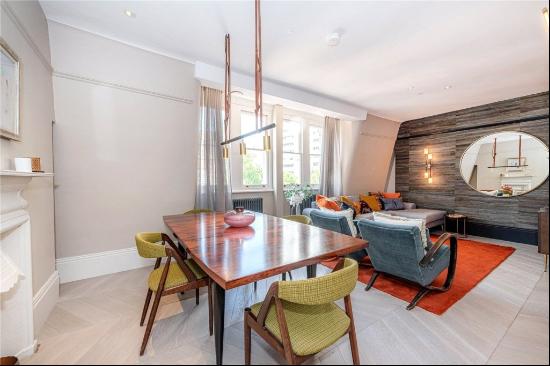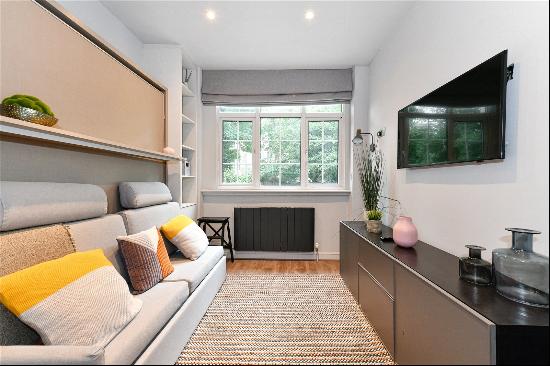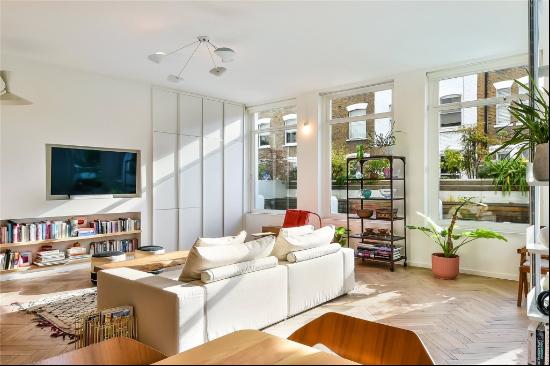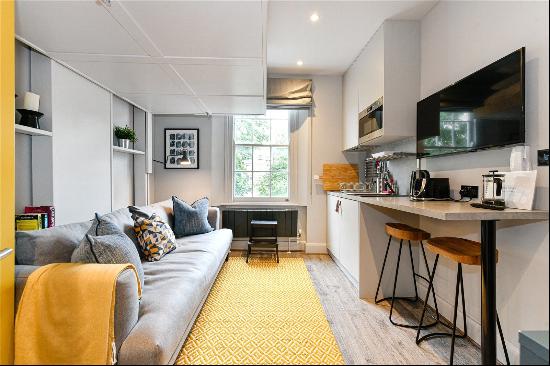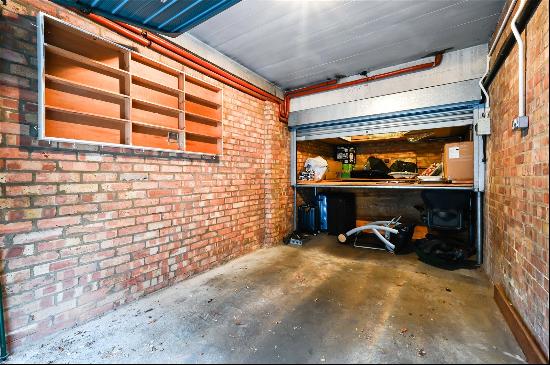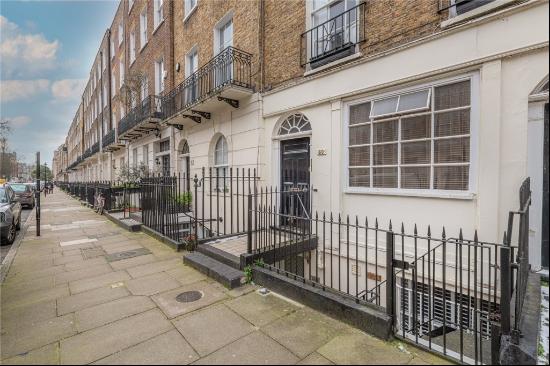
By Richard Parr
Great works of art are timeless because of their sense of purpose — the message they contain — and the virtuoso talent that it took to create them. Whether it’s a Renaissance painting or a piece of digital art, the greatest artworks represent the very best of their era — the height of contemporary thinking about art and the artist’s command of their medium. All of these facets are immediately transferable to designing an interior.

Here, I share some tips on taking inspiration from art, using the example of the living room in this five-bedroom Georgian home in London. It’s a space where the past feels particularly present, making it the perfect backdrop to explore how elements that have been vital throughout the history of art, such as lighting, craftsmanship and storytelling, can be relevant to interior design today.

Master the lighting
From Caravaggio to Turner to Munch, mastering light has long been key to art, inviting us to question where the light is coming from and what it is highlighting. In much the same way, artificial lighting can be manipulated to draw attention to areas, textures or particular pieces in a room.
As a rule I don’t want to know where a light source is. Georgian houses can be a challenge to light and generally I avoid statement fittings that divert focus towards the source rather than the effect. But the skill of the fitting manufacturer — however minimal and invisible — is important and I find myself returning to PSLab, whose craftsmanship and fixtures I much admire.

Create depth and texture
I like to create tension between surfaces and materials, and I am not afraid of colour as long as it is natural. I think that the original floors in this house are a thing of great beauty but to be invited to walk barefoot on to something soft and spoiling, such as this artichoke green rug by Jaipur Rugs, enhances the rawness even more, as the tactility lends added depth and further defines the space.

Celebrate craftsmanship
I find that craftsmanship is so deeply connected to artistry and I consider it an art form that one can also draw inspiration from. For most of my adult life I have had a house in the Cotswolds and I am deeply inspired by things that are close to home. This “Double Helix” sideboard by Gordon Russell of Broadway is part of the history of the area but also part of one of my favourite periods of design: postwar Britain. It was exhibited at the Festival of Britain in 1951 and, as these London terraced houses are British to their core, the form and proportion of this piece can be thought of as a celebration of both this Britishness and their exceptional craftsmanship.

Tell a story
I recently visited the Indian artist Tanya Goel in her New Delhi studio. An exhibition in Belgium described her work as exploring the boundary between “control and intuition, rigour and freedom, structure and chaos”. This bookshelf by Franco Albini is the perfect way to do something similar at home — a place to display not only your collection of books but also fragments of life: collectibles, mementos and treasures amassed over time. I love how bookshelves can gather together a multitude of eclectic “stuff” and give it a sense of order — a narrative — and this unique bookshelf is the furniture equivalent of this concept.

Establish a sense of place
Art, whether discussing ideas or capturing a time, imparts information from the past. My ethos revolves around creating environments that honour the spirit of the place and the time it was made. This house is beautifully preserved and something of its original era would sit perfectly in the space. I love the utilitarian feel of English pewter, for example, which carries its story but is also soft and sculptural.
Photography: © Mark Cocksedge; Knight Frank; © Rory Gardiner / PSLab; Zigzag Modern; 1stDibs




